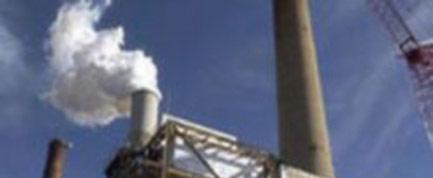Flame Doctor to Cut Industrial Pollution

Ever since man learned how to harness flame people have been using carbon based fuel to provide warmth and, more recently, electricity.
Now researchers have developed a new system for helping the environment and saving industry money by watching the flicker of a flame.
A complex computer program takes information from flame sensors inside a coal burning plant. The sensors previously were only used to see if a flame was burning or not. By calculating what that flame is really doing, the system now allows operators to reduce how much coal they burn and how many greenhouse gases they put into the atmosphere.
Think about a wood fire burning brightly in winter. When you have the right amount of wood, oxygen, and heat built up there is an eye-pleasing, heart warming flame that maintains its overall color, size, and heat.
When the fire starts to die down you stoke it to keep the flames at an optimum level you detect with your eye or the chill on your nose. But no one is inside a boiler in a coal plant to see when the flame is not consistent.
"The system takes the information from the complicated flame patterns and relays it back to the operator," C. Stuart Daw, an engineer who helped design the system, told LiveScience. "The long range plan is that it is running close to optimum all the time, making it possible to reach emission standards more easily and burn less coal."
The initial tests showed a decrease of nitrogen oxides by 20 percent and an almost 50 percent reduction in carbon monoxide.
Sign up for the Live Science daily newsletter now
Get the world’s most fascinating discoveries delivered straight to your inbox.
Nitrogen oxides are a family of gases that can lead to smog, acid rain, and greenhouse gases. A member of the family, nitrous oxide, is much more capable of trapping heat in the atmosphere than carbon dioxide.
An excess of carbon monoxide reacts in the atmosphere to form compounds that are true greenhouse gases. It also reacts to take hydroxyls out of the atmosphere, which if left alone are responsible for reducing the lifetime of greenhouse gases.
The Flame Doctor System, developed by Oak Ridge National Laboratory and the Babcock and Wilcox Company, will be commercially available early in 2005.
"Right now is kind of where the rubber meets the road," Daw said. "We hope over time there will be new editions and new versions of the program. Eventually we hope it is completely automated and uses all available data, so the Flame Doctor will get smarter and smarter."









